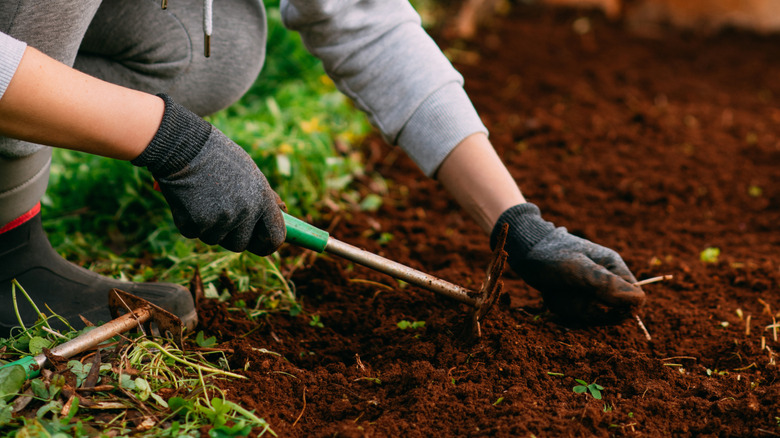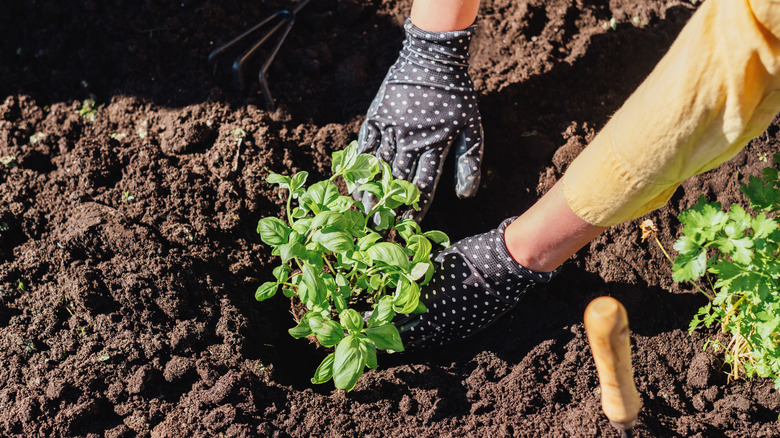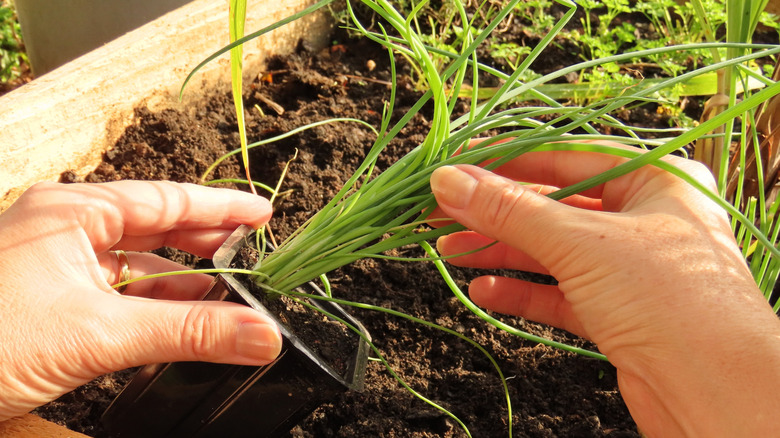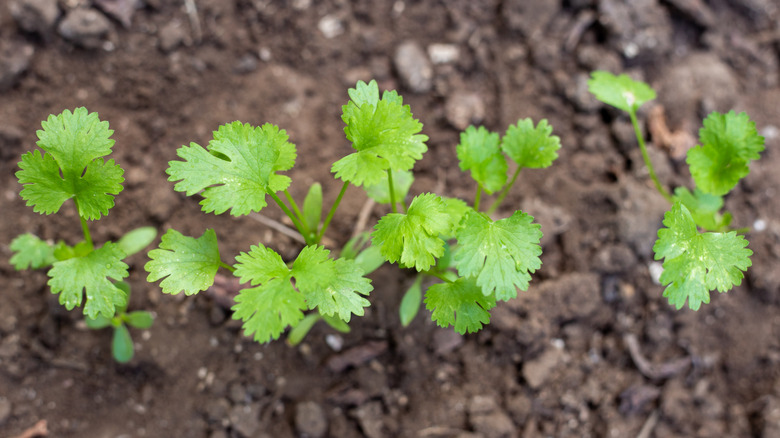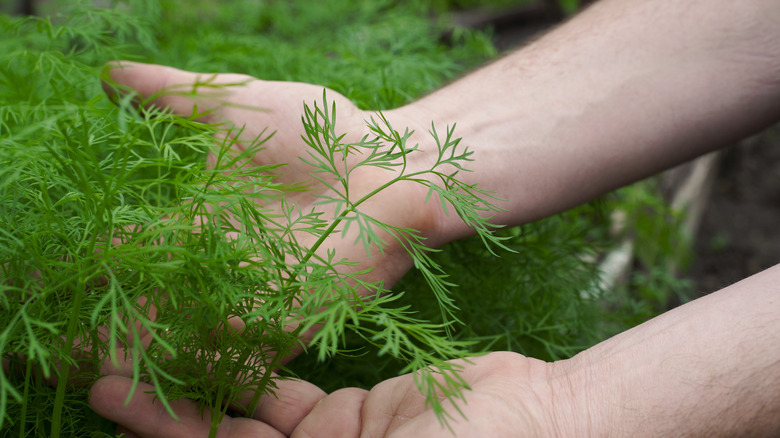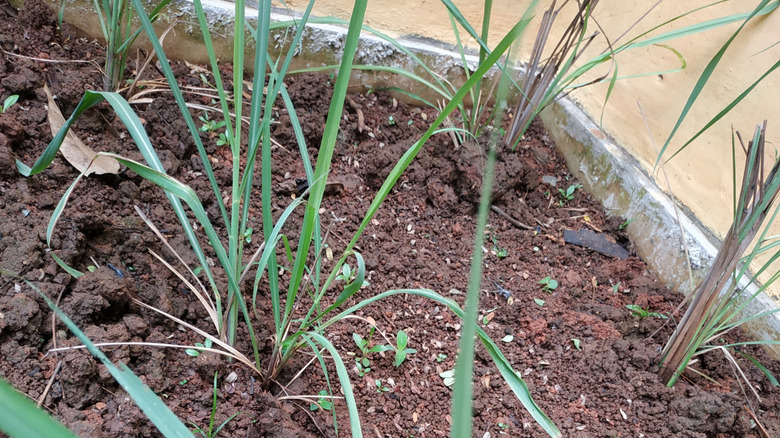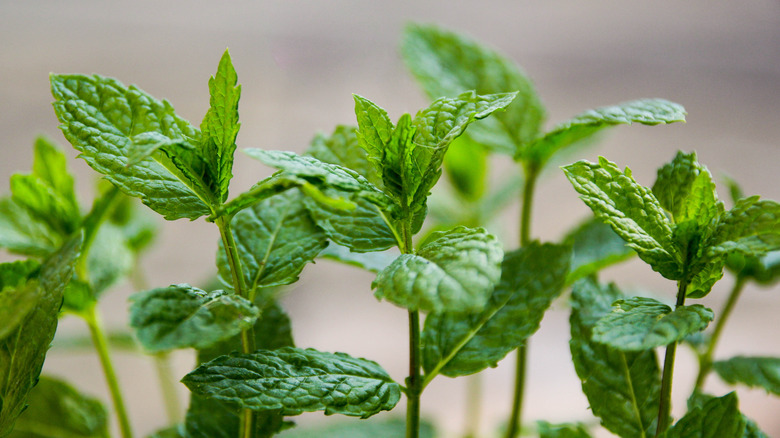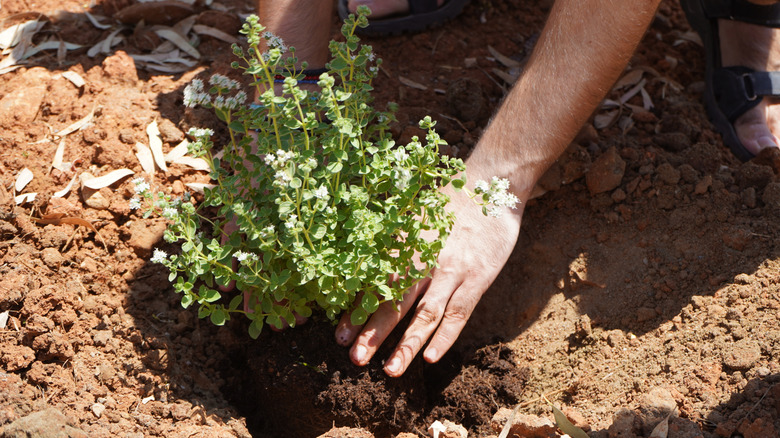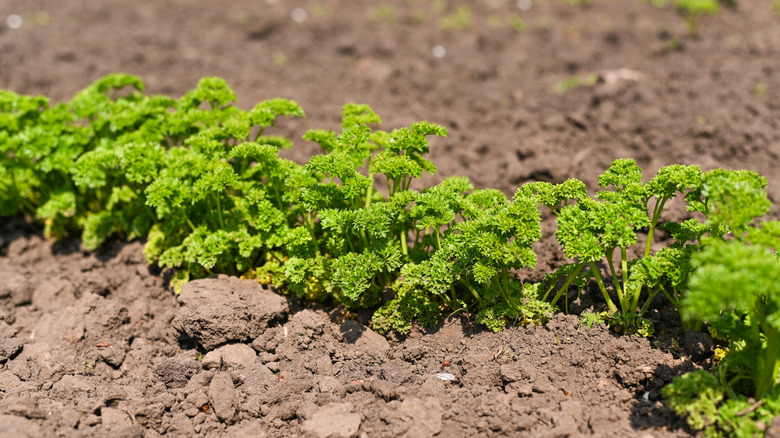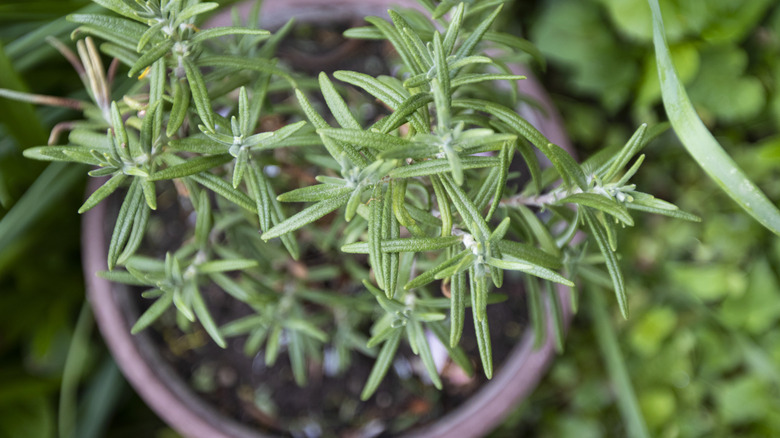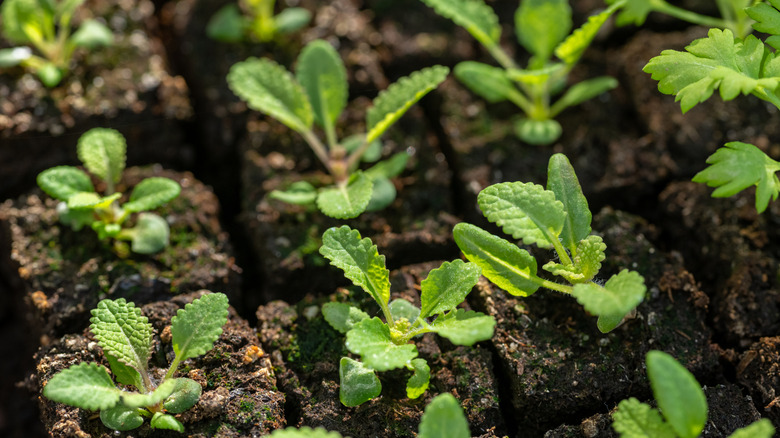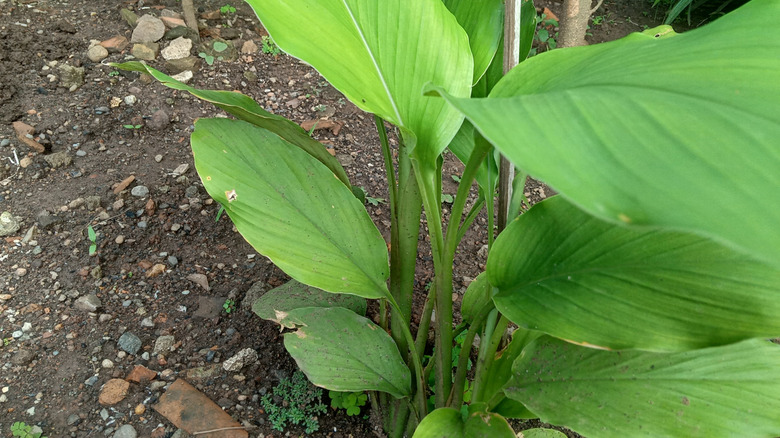It's Not Too Late To Plant And Grow These Herbs In August
For gardeners, August is more than just a time to transition your garden from summer to fall in preparation for vegetable harvests. With so much to do with your garden in the spring, it can be easy to think that it is the only time you can plant herbs. But there are actually plenty of herbs that you can plant and grow in August for a fall harvest, including kitchen staples like basil, oregano, parsley, sage, rosemary, and thyme. Of course, there are also many plants that won't survive if you wait, especially plants with long growth times or ones that do not tolerate cold.
To determine which herbs you can still grow in your garden in August, you will need to do a bit of planning. Every region has a different first frost date, which is the day the temperature drops too low for plants to survive. You want to make sure your herbs have time to grow and produce a full harvest before that first frost date by determining the growth time for each herb you want to plant. This can vary depending on if you want to plant from seeds or if you are transplanting sprouts.
Basil
Basil (Ocimum basilicum) is an aromatic herb that is commonly used in Italian cooking. Most chefs prefer to use fresh basil, so you may be excited to learn that it can be planted in August. However, depending on your location, you may need to plant transplants rather than seeds because they can take 60 to 90 days to reach maturity. That means, if you are planting from seeds in August, you need to have a first frost date in late November at the earliest. Transplants are generally put in the ground after about four to six weeks of growth.
Chives
Chives (Allium schoenoprasum) are a cool-season perennial herb that grows in USDA Hardiness Zones 4 to 8, making them the perfect candidate for August planting. Plus, they are a great companion plant for fall vegetables. You can transplant seedlings for a longer harvest season. From seeds, chives can take up to 90 days to be ready to harvest. If you allow them to go to seed, they may spread to other areas of your garden.
Cilantro
With only 45 days needed to reach maturity, cilantro (Coriandrum sativum) is another great herb to plant in August. It tends to do well with companion plants that help to enrich the soil. It grows well in colder temperatures and will not produce leaves or seeds in the summer, so fall is the perfect growing season. If you allow the plant to seed out, you can also harvest coriander, which is the seed from the same plant that can be ground into a spice.
Dill
Dill (Anethum graveolens) is another annual herb that is commonly used in both canning and cooking. It takes about six to eight weeks to reach maturity after planting the seeds, so if you plant it in August, it will be ready to harvest sometime between October to November. It's not technically a cool-season plant, but high heat in summer, especially during germination, can cause bolting, which can reduce the productivity of your harvest. For most regions, this makes August the ideal planting time when temperatures stay below 95 degrees Fahrenheit.
Lemon Balm
A less common herb that you can plant in August is lemon balm (Melissa officinalis), which is a perennial that grows in hardiness zones 3 to 9. There are several reasons people grow lemon balm, including cooking, medicinal applications, and fragrances. It is a citrus-like member of the mint family. It can grow in both hot and cold environments, but it prefers temperatures between 55 and 70 degrees Fahrenheit. Plus, it only takes about 55 days to be ready to harvest, so there's no problem with planting in August for a harvest in the fall.
Lemongrass
Lemongrass (Cymbopogon) is an annual plant in zones 8 and colder but a perennial in zones 10 and 11. It is widely recognized as a healthy herb used in teas and other beverages. It does well in the fall, but it is recommended to start it indoors for colder climates if you are planting in August to ensure it is ready to harvest before the first frost. Lemongrass also takes a bit longer than other herbs to reach maturity about 75 to 100 days.
Mint
You can also plant and grow mint (Mentha) in August. This perennial grows in hardiness zones 4 to 9 and can be harvested about 60 days after planting. It prefers temperatures between 55 and 70 degrees Fahrenheit, so it tends to do better in spring or fall than mid-summer. Mint is known to be an aggressive grower, and certain varieties are reported as invasive in some states. As such, it is typically grown in containers, though there are three varieties of mint that won't try to overrun your garden.
Oregano
Another common Italian or Mediterranean herb that you can grow in August is oregano (Origanum), although it may do better when transplanted than from seeds, depending on your local climate. It is a perennial herb that grows in hardiness zones 3 to 10 and takes between 80 and 90 days to be ready for harvest. It grows best in temperatures around 70 degrees Fahrenheit, but established plants are hardy against cold.
Parsley
Parsley (Petroselinum crispum) is a popular herb in any kitchen with uses for flavoring almost any savory dish. You can plant parsley from seeds when temperatures are between 50 and 70 degrees Fahrenheit. After about 45 days, you can harvest your parsley as needed. It also will continue to grow over the winter if you start or transplant it to a pot and bring it inside. However, you will need to make sure it still gets plenty of sun.
Rosemary
Another herb that grows just fine when planted in August is rosemary (Salvia rosmarinus), which is a perennial growing in hardiness zones 8 to 10. In the fall, it is best to start growing indoors and transplant the seedlings once they reach about 4 inches tall. This plant won't be ready to harvest the same season you plant it, regardless of the time of year. It can take years for rosemary to reach maturity. It can, however, tolerate temperatures down to about 15 degrees Fahrenheit.
Sage
Sage (Salvia officinalis) is a perennial that grows in hardiness zones 4 to 10. It can be planted whenever temperatures are between 60 and 70 degrees Fahrenheit. For harsher climates, you may want to plant in pots to bring it indoors for the winter for continued harvests. Sage can produce readily available herbs for years, with the first harvest ready about 75 days after planting.
Thyme
Thyme (Thymus vulgaris) is yet another perennial, hardy in zones 5 to 9, that can easily be planted and grown in August. It has many uses both in the kitchen and medicinally. You won't want to wait too long before getting your thyme in the ground, though, because it does best when temperatures are above 70 degrees Fahrenheit. That being said, you can easily transplant seedlings in August that have been started indoors. You can harvest your thyme between 75 and 90 days.
Turmeric
Turmeric (Curcuma longa) can be planted in August, but it won't be ready to harvest in the same season. This perennial grows in hardiness zones 8 to 11 and can be planted when temperatures are at least 68 degrees Fahrenheit. While you can grow turmeric if you live in a cold climate, it requires careful timing, so August probably won't work there. You can harvest your turmeric after the first growing season once the plant goes dormant, meaning it stops growing for the season.
